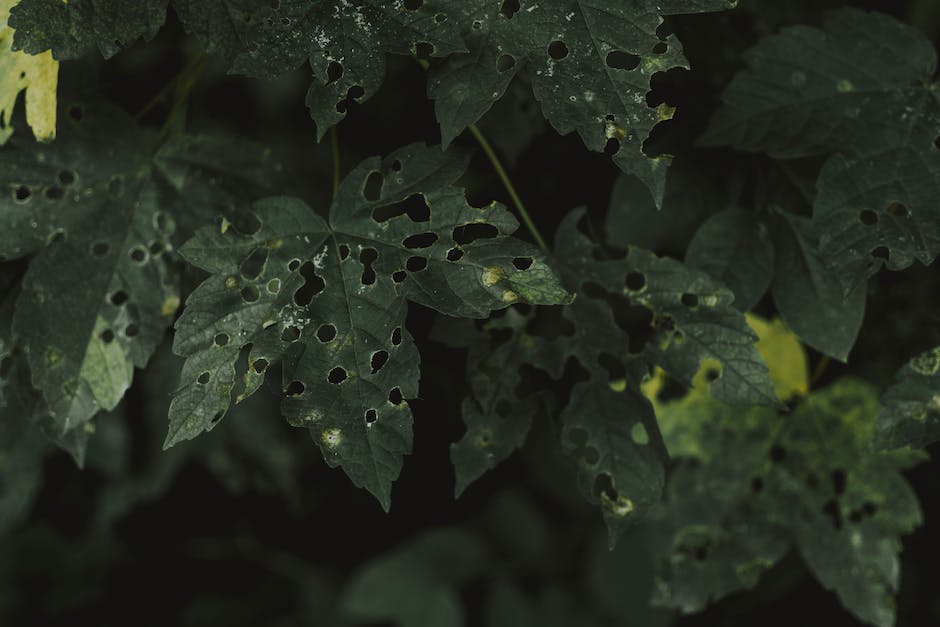Anyone who takes pride in their lawn can attest that maintaining its health and vibrant green color goes beyond regular watering and mowing. A serious threat lurking under the surface, ready to turn your luscious green lawn into unsightly patches of unhealthy grass, comes in the form of unwelcome lawn pests. These pests, which range from grubs to beetles, ants, mole crickets, and more, can cause significant damage if left uncontrolled. This informative guide aims to provide the essential knowledge you need to identify the most common lawn pests, understand the tell-tale signs of their destructive activities, and implement effective pest control and management techniques. Furthermore, there will be a comprehensive discussion on preventive measures that every homeowner can utilize to keep their lawn pest-free and looking its best all year round.
Identifying Common Lawn Pests
Understanding Grubs
Grubs are immature forms of a variety of beetles, who use your lawn as their nursery. These pale, C-shaped insects reside in the upper layer of the soil and feed off the roots of your grass. This damage manifests itself above ground as brown, patchy clusters of grass that can be easily pulled away. Each grub can live up to 3 years, feeding off your lawn during their life cycle, which makes identifying and managing them promptly crucial.
Knowing Beetles
Different species of beetles also fall under common lawn pests. These pests feed on the grass and its roots, causing damage similar to that made by grubs. For example, the black turfgrass ataenius beetle is approximately 0.5 inches long and mainly black in color. It is primarily found on the East Coast and in the Midwest. Another harmful beetle, the green June beetle, is active during the day and is attracted to moist, well-watered lawns.
Recognizing Ants
Common lawn ants are deemed pests not for feeding on the lawn but because they build nests and create unsightly mounds of soil on your garden. Additionally, these ant hills can kill the grass around them and cause mower damage. Ants vary in color from reddish-brown to black and range in size. Red imported fire ants are considered more dangerous due to their painful sting, and these colonies are often associated with a visible mound of loose soil.
Identifying Mole Crickets
Mole Crickets are notorious lawn pests in the Southern US. They are large, at nearly 2 inches long, and have a cylindrical body, mole-like front limbs for burrowing, and large wings. They can cause significant damage to lawns by their tunnelling and feeding activities. Identifying mole crickets involves not just looking for the insect, but inexplicable bare patches, soft spots, and uprooted grass are common indications of their presence.
Other Pests
While grubs, beetles, ants, and mole crickets are some of the most common lawn pests, you should also be aware of others. Sod webworms are small lawn caterpillars that chew grass blades, while billbugs are small weevils that damage grass by feeding on it at both the larval and adult stages. Understanding the diverse types of lawn pests will aid in their identification and help you implement effective control strategies.
Damage Signs and Symptoms
Recognizing Signs of Lawn Pest Damage
The first sign of lawn pest damage often comes in the form of irregular brown patches spread throughout your yard. These patches may appear randomly, rather than in a neat, symmetrical pattern. Close examination might reveal that the grass in these areas is not just discolored but also dead or dying, giving the patches a parched look that further distinguishes them from the rest of your lawn.
Wilting Grass Indicates Trouble
Another symptom that can point to a pest-infested lawn is wilting grass. Grass that is deformed or wilting despite being properly watered may be under attack from pests. The roots of grass are particularly attractive to many types of insects, and these same insects may also feed on the stems and leaves, leading to the wilting appearance.
Visible Thinning of Grass
The thinning of grass across a previously lush lawn can also be a sign of pest infestation. Watch for any sudden changes in the density of your grass. It may seem like the grass is receding, or sections may begin to resemble a rough, thin hairbrush rather than a smooth green carpet. This is often a sign that pests have been feeding on your lawn, reducing its vitality and lifespan.
Spotting Visible Pests
While the above symptoms can suggest a pest problem, the presence of visible pests is a surefire sign of an infestation. This can include insects crawling on the blades of grass or around the base of each plant. Such insects might be beetles, grubs, ants, or other pests. There may also be signs of larger pests such as moles or rats, evidenced by holes or dug-up areas throughout your lawn.
Taking Action
Once these signs and symptoms have been identified, action can be taken to manage the pest problem. This can range from the use of pesticides or natural remedies to professional lawn care services. Monitoring your garden regularly and spotting these signs early will enable you to minimize the damage to your lawn and take back control from these unwelcome visitors. Remember, a healthy lawn is your best defense against lawn pests. So, providing proper care and maintenance to your turf is crucial for preventing infestations. If you are unsure about the type of pest or how to tackle the problem, consider seeking professional help.

Pest Control and Management Techniques
Understanding Pest Control Methods
Pest control methods typically fall into two categories: chemical and organic. Chemical methods involve the use of insecticides, which are substances specifically designed to kill insects. These come in a variety of forms, including sprays, granules, and powders. Organic methods, on the other hand, use natural substances and processes that deter pests without the potential harm caused by chemical insecticides.
Best Practices of Using Insecticides
When using insecticides, it’s best to apply them in the early morning or late evening, as these are the times when pests are the most active. Additionally, be sure to follow all the instructions on the insecticide’s label, as improper use can lead to ineffective pest control or even damage your lawn. Always prioritize your safety while handling insecticides; wear gloves, long sleeves, and eye protection to prevent contact with your skin or eyes.
Organic Pest Control Methods
In addition to chemical methods, there are also a variety of organic pest control options available. One of these is the use of beneficial insects. These are insects that prey on the pests in your lawn, helping to control their population naturally. Examples of beneficial insects include ladybugs, which eat aphids, and nematodes, which prey on a variety of lawn pests.
Homemade Sprays and Healthy Lawns
Another organic pest control method is the use of homemade sprays. These often include ingredients like vinegar, garlic, and chili pepper, which are known to deter pests. To make the most effective homemade spray, ensure you use pure, organic ingredients.
Maintaining a healthy lawn is, perhaps, the best way to deter pests organically. A well-cared-for lawn can often resist pest infestations on its own. Ensure your lawn receives the right amount of water, regularly aerate the soil, and never cut your grass too short, as this can stress it and make it more susceptible to pests.
Safety Measures in Pest Control
Regardless of the pest control methods you choose, always prioritize safety. For instance, even organic, homemade sprays can cause eye or skin irritation if not handled properly. Whenever applying pest control methods, protect your eyes, skin, and respiratory system. Furthermore, keep pets and children away from treated areas until they’ve had a chance to completely dry or settle.

Preventive Measures
Proper Lawn Care
Maintaining your lawn is the first step in preventing pests. Regularly rake leaves and remove any debris, as piles of dead leaves create a perfect habitat for pests. Fertilize your lawn four to six times per year, always following product instructions. Most lawn pests thrive in unhealthy lawns, so keeping your grass in the best possible health is crucial.
Pest-resistant Grass Varieties
Choosing the right type of grass can make a big difference in preventing lawn pests. Some grass variants, such as zoysia grass, fescue, ryegrass, and bermudagrass are known to be more pest-resistant. Research grass types that thrive in your climate and ask for advice at your local garden center to find the best one for your yard.
Appropriate Watering and Mowing
Watering your lawn appropriately plays an important role in pest management. Over-watering can make your lawn susceptible to pests, so always water deeply but infrequently. This way, it encourages the grass to grow deep roots, ultimately making it more resistant to pests and drought. Likewise, the way you mow your lawn can affect the prevalence of pests. Mowing at the right height and frequency can promote healthier grass growth, minimizing the likelihood of a pest infestation. A good rule of thumb is to never remove more than one-third of the grass blade at a time.
Regular Lawn Inspections
Conducting regular lawn inspections can help you spot signs of pests early before they become a major problem. Signs to look for include yellow or brown patches, chewed grass blades, and increased bird activity on your lawn, as birds may gather to eat insect pests. If you’re unsure of what to look for, consider hiring a professional for a lawn inspection.
Use of Pest Control Products
Another preventive measure in pest management is incorporating pest control products. This includes lawn treatments and insecticides. Remember to follow the product’s instructions carefully and apply these treatments strategically to get the most out of their usage. Some treatments target specific pests, while others offer broad-spectrum coverage.
Introducing Beneficial Insects
Some insects are beneficial for your yard. These insects, like ladybugs and spiders, feed on harmful pests, maintaining a balance in your lawn’s ecosystem. Encouraging these beneficial insects can be as straightforward as planting a diverse landscape that provides habitat and nectar for them.
Remember, prevention is always better than cure. By incorporating these preventive measures, you can create a healthier, more sustainable ecosystem in your yard, reducing the risks of harmful pest infestations.
A lawn free from pests is not merely an aesthetic asset but also a testament to successful and mindful stewardship. Knowledge about the types of pests, identification of their presence, implementation of effective control techniques and proactive preventive measures are all crucial components in maintaining a healthy, pest-free lawn. By integrating the information shared in this guide into your lawn-care routine, you’ll be better equipped to safeguard your lawn against the onslaught of more than just grubs and beetles. Remember, although managing lawn pests can take time and dedication, the lush, vibrant green reward stretching out before your home makes it all worth the effort.

